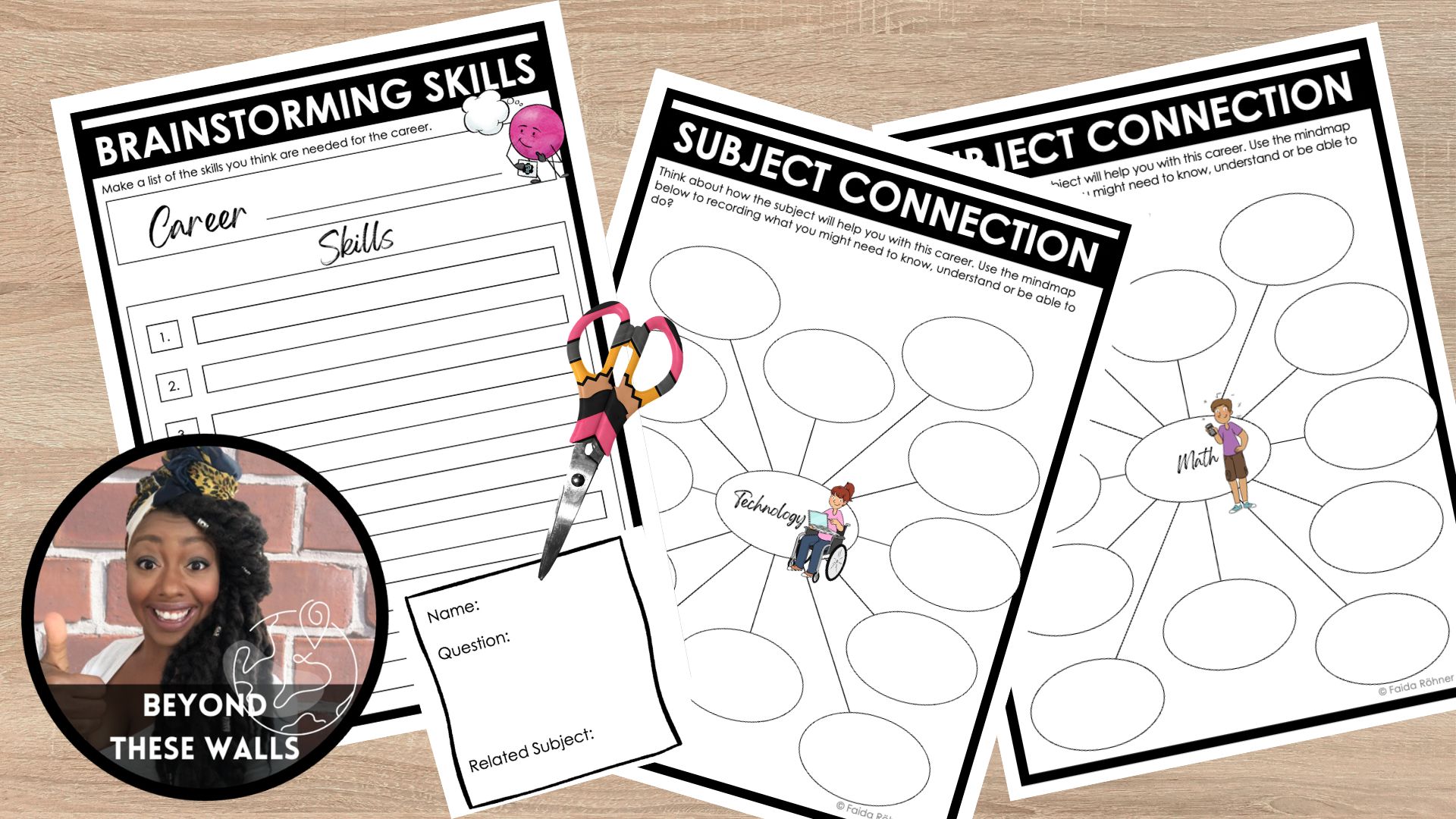Let’s be honest—handing over any part of unit planning to students sounds like a fast track to chaos. It sounds like one of those lofty, Pinterest-worthy goals that real teachers with real time laugh nervously at during staff meetings…That being said, I would like to share with you why having students help plan a unit is worth it and some practical tips from my own experiences to make it possible…without losing your sanity.
Now, before you close this tab and mutter, “Not today, chaos,” hear me out.
Getting students involved in unit design using real-world skills isn’t just a nice idea—it’s a game-changer. Yes, it takes some effort up front (okay, maybe more than some), but it leads to deeper learning, higher engagement, and kids actually understanding why they’re learning what they’re learning.
And the best part? You don’t have to do it alone. I’ve got a free resource to make the process smoother, smarter, and totally doable. Let’s walk through how you can turn student curiosity into a real-world-driven unit that hits the standards and gets kids excited.
Real World First, Everything Else Second
Before diving into content or standards, ground your unit in something real and relatable. Help students make the leap from “Why are we learning this?” to “Ohhh, that makes sense!”
Main Steps:
- Making real-world connection
- Brainstorming related professions
- Identify the skills
- Preassessment or Launchpad for deeper inquiry
Start by asking students what the “real world” connection might be. If your unit is about measurement, pose the question: “Who needs this in real life?” (Spoiler: bakers, builders, astronauts, and IKEA furniture survivors). Let students brainstorm careers or situations that use the topic. This doesn’t have to be formal—sticky notes, a quick class chat, or a whiteboard brainstorm all work.
Once they have a real-world scenario in mind, ask: What skills would someone need to be successful in that role?
This serves as a fun preassessment and gets student buy-in because they immediately see the purpose of what they’re about to learn. Bonus: you can turn it into a mini research project if you’re feeling fancy.
From Skills to Subjects
Once students identify skills, the next step in having students plan a unit is guiding them in mapping those skills to subject areas. For example:
- A marine biologist needs math for measurements, science for ecosystems, and language arts for writing up research.
- A game designer needs technology, art, math, and a whole lot of creative thinking.
This is where my freebie, Inquiry Ignition: Student-Driven Unit Design, really shines.

This free resource includes:
- A Brainstorming Skills sheet that helps kids think through what their career of interest actually involves.
- Subject-specific Concept Maps for Art, Language Arts, Math, Music, PE, Science, Social Studies, and Tech.
- A Blank Concept Map for any other subjects your unit touches.
- Question Cards to help kids create guiding questions for their learning.
Students Help Plan a Unit
This free resource is designed to give you structure and give students voice while co-constructing a unit . Win-win!
Then Comes the Knowledge
Once students know the skills and how they relate to subjects, they can start brainstorming what knowledge they’ll need to master.
- What concepts are most important?
- What do they want to know more about?
- What don’t they understand yet?
Suddenly, you’re not dragging them through a unit—they’re pulling you along because they’re actually curious. It’s beautiful.
Students Help Navigate, but You are Still in the Driver’s Seat
I get it—letting students help plan a unit might sound like handing over the keys to the minivan. But with the right structure, it’s more like giving them the GPS: they help choose the route, but you’re still driving.
And once students have brainstormed some potential stops along the way in their journey of learning, this is where you use your discretion, creativity, capabilities and capacity to make decisions about learning tasks. After students are engaged, you just match your curriculum with the most appropriate concepts, knowledge and skills your students identified.
If you would like a little bit more help on how to do this, I would recommend reading my blog post about creating authentic learning tasks using the GRASPS model.
Final Thoughts about Allowing Students to Help Plan a Unit
When students identify real-world skills and use them to shape what they learn, everything gets more purposeful. They see the relevance. They care more. And best of all? They start to own their learning.
You don’t have to reinvent your entire curriculum to start this process. Even a small step—like letting students brainstorm the skills they’ll need in a future career—can spark some serious engagement.
And if you’re thinking, “That sounds great but I need help getting started,” you’re in luck. My free resource, Inquiry Ignition: Student-Driven Unit Design, has everything you need to bring real-world planning into your classroom without losing your mind (or your minivan).

